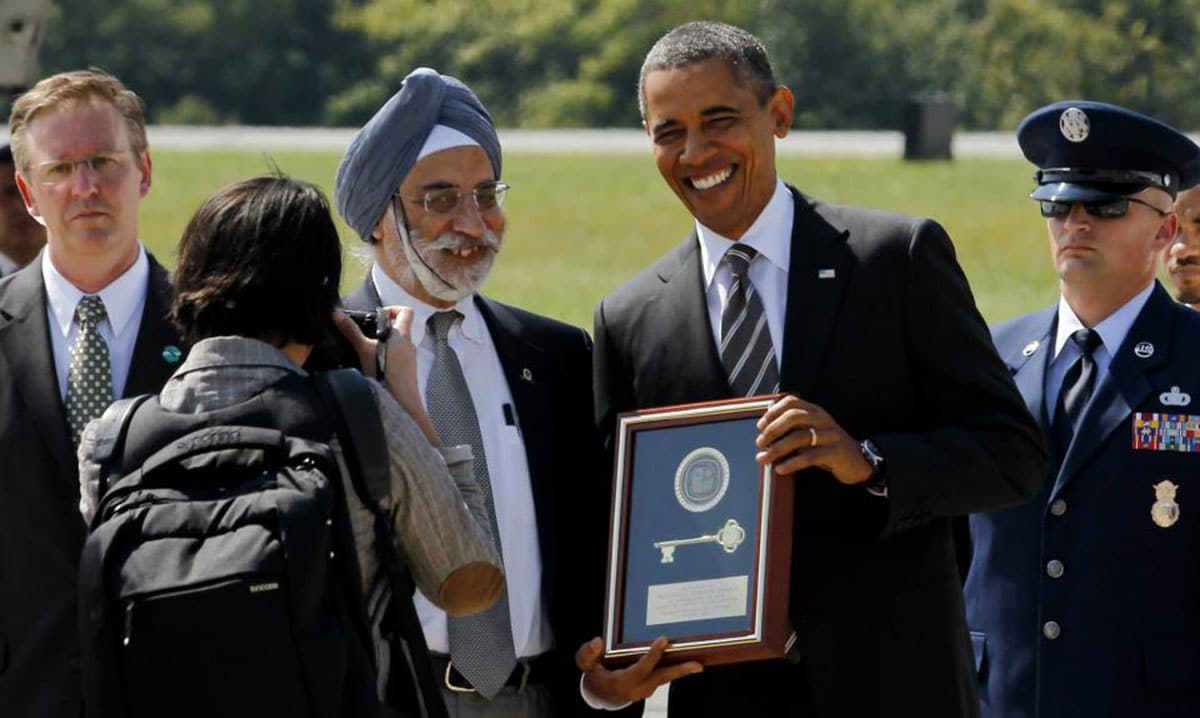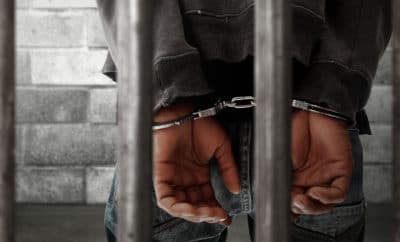Crime
Charlottesville did not expect violence of this scale: Ex-mayor Satyendra Huja

Satyendra Huja with the then US President Barack Obama in 2012.
Photo Credit: Satyendra Huja/ Facebook
The city has hired an outside investigator to see where things went wrong, Satyendra Huja, ex-mayor of Charlottesville, tells Little India.
Exactly one month after a far-right rally turned violent in Charlottesville, the tension in this university town is still palpable. About 100 people on Sept 12 participated in a protest mimicking the decision taken by Charlottesville authorities last month to shroud Confederate statues.
The protesters covered the statue of former US President Thomas Jefferson in black tarpaulin and shouted slogans such as “TJ is a racist and rapist,” directed at the former president, known for owning slaves, according to reports. Protesting students and other community members carried Black Lives Matter posters while sloganeering against Pres. Donald Trump and the Ku Klux Klan.
The city, with a population of about 46,000, is ethnically diverse and culturally tolerant and has a sizeable Indian American population. Satyendra Huja, an Indian-origin American served as the city mayor for two terms. He served on the Charlottesville City Council from 2008 to 2015 and served as Charlottesville mayor in 2012 and again in 2014.
In a conversation with Little India, Huja, president of Community Planning Associates and an adjunct faculty at the School of Architecture, University of Virginia, recalls the events that unfolded on the day of the fateful white supremacist rally in the city in August: “I was very disappointed at the turn of the events….. There was a great deal of tension that exploded.”
Indian Americans, who not only form a significant section of the city, but also constitute a substantial portion of the student population at the University of Virginia, were not initially involved in the counter-protests, says Huja: “There was very little participation from the Indian American community.”
But despite the bad rap his city has received after the violence, Huja remains confident about its diversity and tolerance: “Charlottesville is a diverse community. We welcome people from all parts of the world.”
Nevertheless, he admits the city was ill-equipped for the turn of events on that fateful night: “The city did not expect violence, to the extent that happened. Most of the neo-Nazi and alt-right groups were from out of town.”
He acknowledges that students returning to the campus this fall the events may be apprehensive: “Students are more aware of the tensions in the community.”
But Huja believes the university and the authorities have taken steps to prevent a repeat of the violence.
“The University has established a task force to evaluate what happened and how to avoid such events in future,” he said. “The city has held a number of town hall meetings to hear citizens’ concerns. It has also hired an outside investigator to see where things went wrong, and how things can be improved in the future.”



